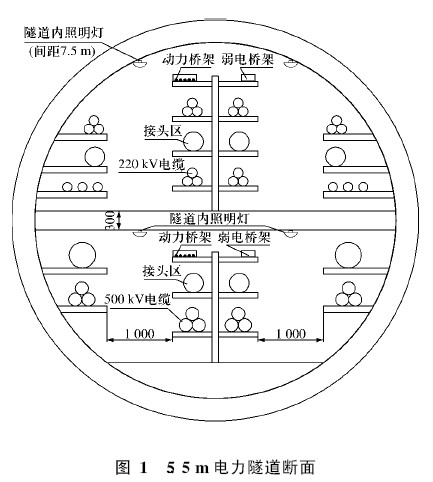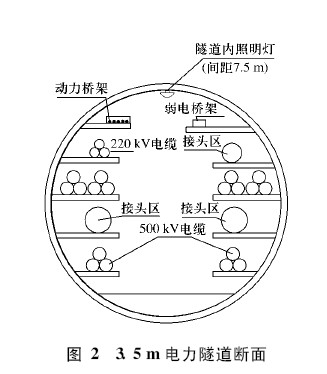introduction
Cable tunnels are underground civil facilities capable of laying multiple cable lines, and can rationally develop and comprehensively utilize urban underground space. The construction of domestic cable tunnels started relatively late, but some big cities such as Beijing and Shanghai have begun to work on the construction of cable tunnels to solve the contradiction between urban development and resource shortages. For example, Beijing West Road, Huaxia West Road, which has been completed in Shanghai. Cable tunnels of 500 kV class, using 220 kV cable tunnels in the Yangtze River Tunnel Bridge, Fuxing Road, Cao'an Road - Yutian Road and other cable tunnels of 220 kV and below.
1 Project Overview
The starting point of the Beijing West Road and Huaxia West Road cable tunnel is the 500 kV Expo Substation on Beijing West Road. The end point is Jinxiu Road (Huaxia West Road) 500 kV Sanlin Substation, with a total length of 15.1 km. It is the State Grid Corporation of Shanghai. The overall power grid planning was built to solve the problem of the high-voltage corridors in the central city, the connection of the backbone power grid, and the use of electricity for the Expo. The cable tunnel of the 5. 5 m diameter is about 4. 8 km long, and the length of the cable tunnel of the 3. 5 m diameter is about 4. 8 km. There are 15 working wells in the project, the minimum spacing between each working well is about 525m, and the most is about 1 400m. The section is shown in Figure 1. The project is the first cable tunnel of 500 kV voltage class in China. It is the most common type of project in terms of power transmission voltage level, construction length and section size. The scale of its auxiliary system is also considerable. The power supply and lighting system is one of the cable tunneling assistance systems that provide a safe and reliable power source for all electrical equipment within the cable tunnel and provide the necessary lighting to ensure proper operation of the power cable tunnel. The power load in the cable tunnel includes lighting, fans, water pumps, monitoring systems, maintenance equipment, etc., with a large number and scattered distribution. Among them, the largest number is lighting fixtures, about 8,000 sets, the lighting load is distributed linearly with the cable tunnel, which is the distributed load; the relatively large capacity of the fan and the pump are relatively concentrated in the working well, which is the concentrated load. The concentrated load accounts for about 70% of the total power load of the entire tunnel.

2 Power supply and lighting design
Cable tunnels belong to underground buildings with small space, few exits, and poor internal environment, which require high performance. Since there are no specific specifications and technical standards for cable tunnel engineering, there is no similar project of the same scale for reference or reference in China. Therefore, there is a certain difficulty in the design of power supply lighting, focusing on solving problems in design standards, equipment control, and grounding systems.

2. 1 Design standard 2. 1. 1 Electrical load level There are many electrical equipment in the tunnel, and it is reasonable to determine the load level of the power equipment, which is related to safe operation and engineering cost. In the design process, the special characteristics of the cable tunnel were fully considered, and the Shanghai Power Grid Construction Company and the Shanghai Transmission and Distribution Company were exchanged to listen to the needs of the operators, and a reasonable load level was determined:
(1) Primary load: Emergency lighting and monitoring equipment.
(2) Secondary load: fan, water pump, normal lighting.
(3) Three-stage load: Check the power supply, etc.
According to different load levels, the requirements of the power supply, the primary load is dual power supply and the online EPS (or UPS) power supply mode; the secondary load is the dual power supply end self-cutting power supply; the third-level load uses a single power supply chain Power supply mode.